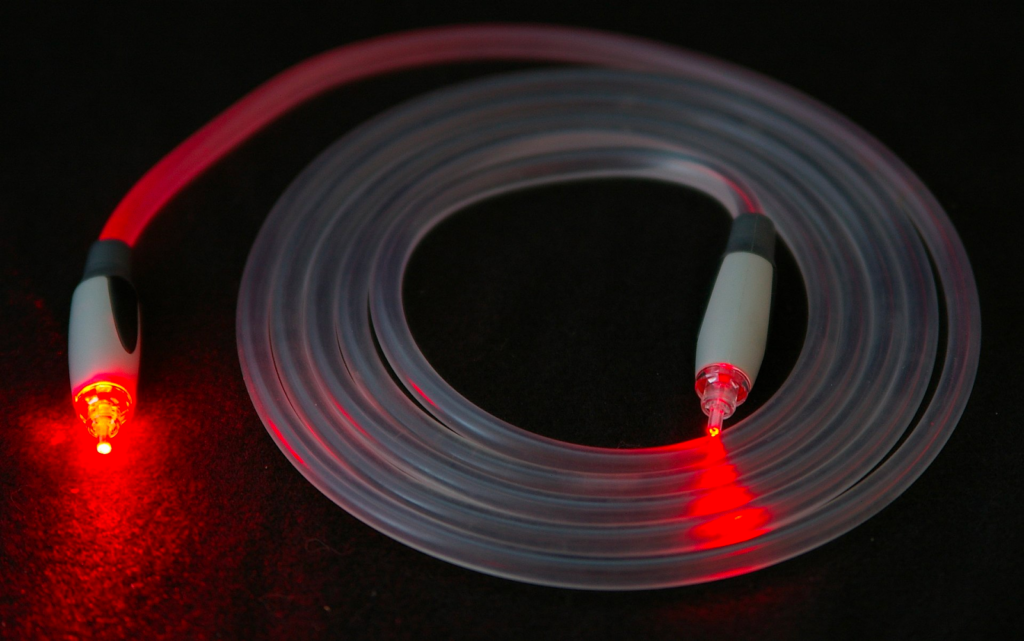Cables have been an essential component of professional audiovisual (pro A/V) applications for decades. The development of long-reach cables has been a crucial factor in the evolution of these technologies, enabling the transmission of video and audio signals over longer distances. Here our CEO Bill Huang condenses 100+ years of cable history into a succinct write-up on the optical evolution from the earliest wire cables to the latest in optical connectivity.
Early Days of Long Cables
The first long-reach cables were developed in the late-19th century for use in telegraphy and telephony. These early cables were typically made of copper or steel wire and could transmit signals over distances of several hundred miles.
In the early 20th century, the development of radio and television technologies led to the need for longer-reach cables capable of transmitting high-frequency signals. The first coaxial cables for broadband communication systems were developed by Bell Labs in 1929 and used to transmit radio signals over long distances.

A Coaxial Cable (Photo credit: AT&T)
Coaxial cables consist of a central conductor surrounded by an insulating layer and a braided shield. The shield provides protection from interference and helps to maintain the signal’s integrity over longer distances. Coaxial cables became the standard for video and audio applications in the mid-20th century and remain in use today.
The Digital Revolution
The digital revolution of the 1980s and 1990s brought about significant changes in video and audio transmission technology. The development of digital signal processing and digital compression techniques enabled the transmission of large amounts of digital data including high-quality video and audio signals over longer distances.
Fiber optic cables became the preferred option for long-reach applications, thanks to their ability to transmit digital signals over much greater distances than copper cables. Fiber optic cables use light to transmit signals, which allows for higher bandwidth and lower signal degradation over longer distances. Using glass or plastics, fiber optic cables eliminate most of the metal material in a typical cable construction and reduce the weight significantly.
But fiber optic cables were still limited to computer networking and telecommunications due to their high cost and manufacturing complexity. Pro A/V installers and consumers were still not familiar with the usage of the fiber optic cables. One of the most commonly used fiber optic cables in consumer electronics and Pro A/V in the early days was the TOSLINK, or Toshiba Link, for digital audio transmission.

A TOSLINK Cable for Optical Audio
Fiber Optical Connectivity Trend in Pro A/V
Recent years have seen growing demand for even longer-reach cables capable of transmitting ultra-high-definition (UHD) and 4K video signals, which have become popular in pro A/V applications like large-scale events, home theater/conference hall installations and broadcasts. These cables must be able to maintain the signal’s highest integrity over long distances.
These challenges for the good old copper cables became greater and started driving the industry toward better solutions. Manufacturers responded to this demand by developing new cables and connectors capable of transmitting UHD and 4K signals over even longer distances. HDMI Active Optical Cables are one of the most popular optical cables used in the pro A/V space. A hybrid design combines copper (for legacy, low-speed signals) and fiber optic components (for high-speed signals) to achieve the necessary bandwidth and distance while reducing the weight and bulkiness of the cable.

(Photo Credit: Pure Fi)
Another reason fiber optical cables are important in the pro A/V industry is because they are future-proofed. As new technologies emerge and video resolutions continue to increase, longer cables with higher bandwidth will be required to keep up with the demand. Upgrading cables can be time-consuming and costly, so investing in longer fiber optic cables that can handle the latest technology will save time and money in the long run.
What Pure Fi Brings To The Table
Fiber optic cables have started to play a vital role in the evolution of video and audio technology, enabling the transmission of signals over longer distances and at higher data throughput. Pure Fi’s unique ability to blend integrated circuit design and manufacturing expertise allow us to create high-quality, high-speed and long-distance fiber optic solutions.

From the early days of copper wire and coaxial cables to today’s fiber optic solutions, the history of long-reach cables in video and audio applications is one of constant innovation and advancement. As the demand for higher-resolution video and higher-fidelity audio signals continue to grow, Pure Fi will continue to meet this demand with even more innovative solutions in the years to come.

